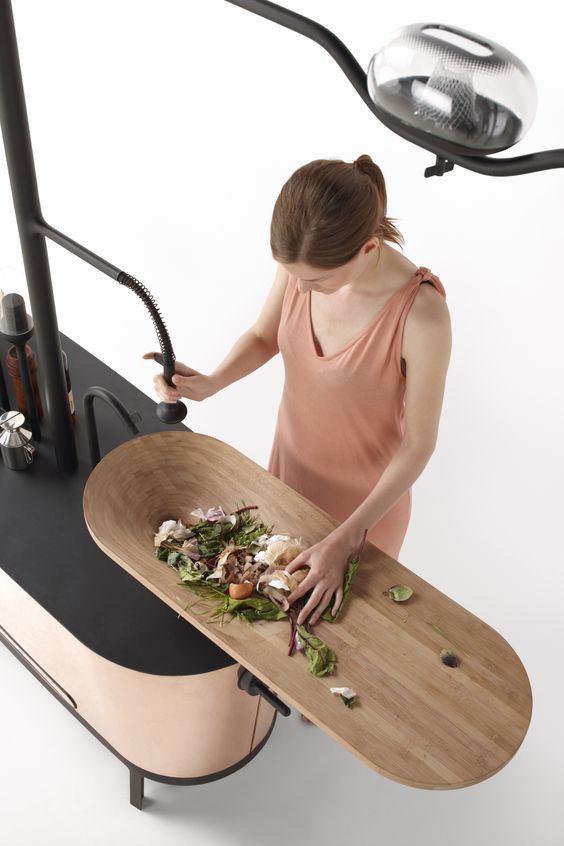Image Bio-digester kitchen island by Philips, 2011.
This text is part of the document: (EN) “Vision Concepts within the landscape of design research” (http://jrms.pktweb.com/?p=3589).

Speculative design is an area of design research, presents in different design disciplines, where design is about ideas, not -factual- products. It produces artefacts, which are not intended to be mass-produced. Both Auger (2012) and Dunne and Raby (2013) distinguish speculative design from other design techniques as a space containing different forms of design that all happen when designers use fictional or imaginary worlds, thereby creating a space of challenges free from the restrictions of commercial products and separate from the marketplace. These imaginary worlds take place in alternative presents or diverse types of futures.
Through the different forms of speculative design, designers facilitate “a dreaming process that unlocks people’s imagination” (Dunne & Raby, 2013) asking what-if questions and developing alternative visions. Speculative designers “use fictitious objects at the core of [their enquiries]” (Auger, 2012) as a way to trigger discussions (Mollon & Gentes, 2014) with a broad audience.
Several authors have looked at the aims these speculative designs serve and found that they can function as a form of thinking, questioning and dreaming (Auger, 2012), as provocation and critique (Hales, 2013), and according to Dunne and Raby (2013) as inspiration, aesthetic exploration, speculation about possible futures, and catalyst for change.
